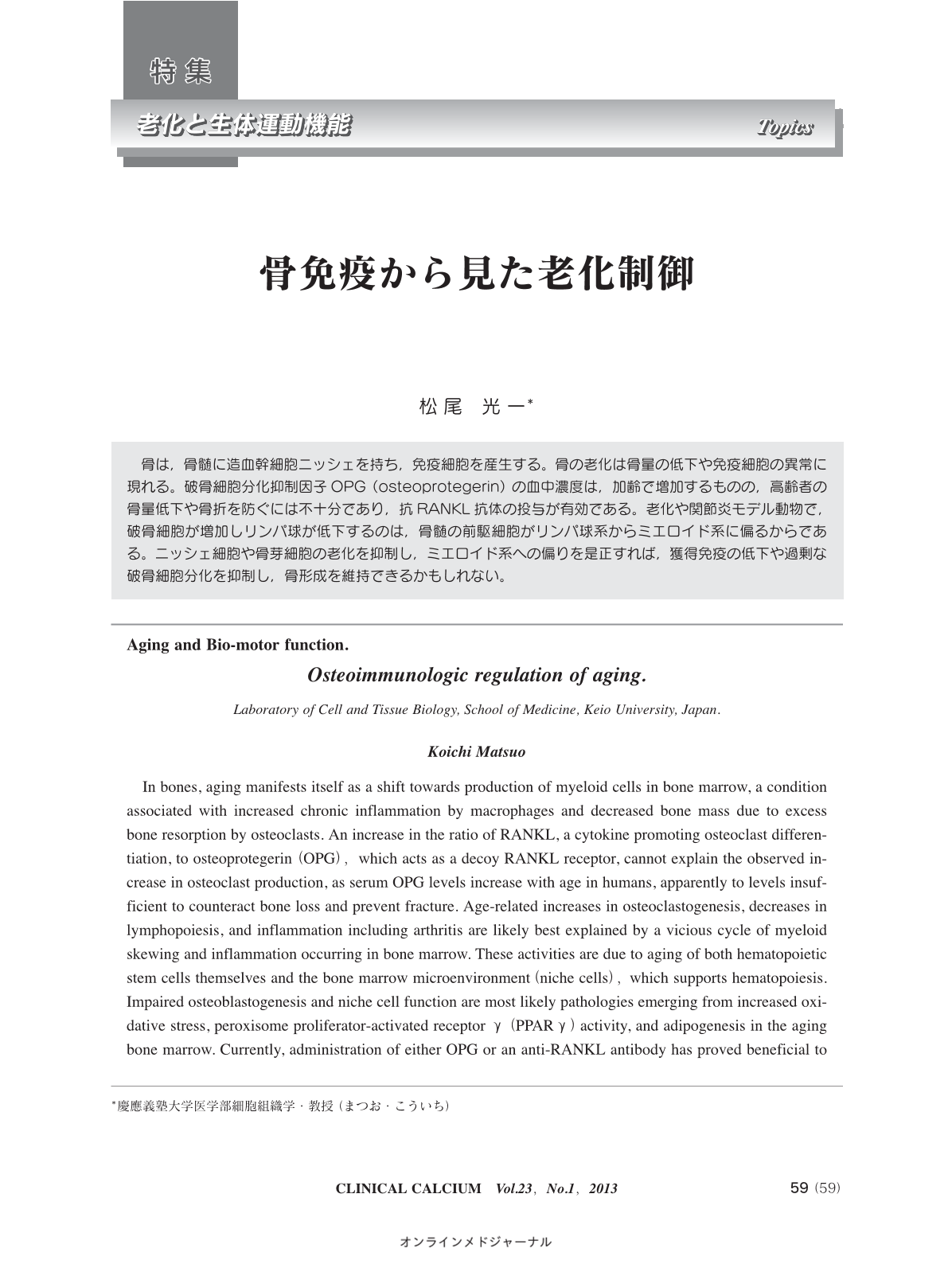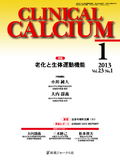Japanese
English
- 有料閲覧
- Abstract 文献概要
- 1ページ目 Look Inside
- 参考文献 Reference
骨は,骨髄に造血幹細胞ニッシェを持ち,免疫細胞を産生する。骨の老化は骨量の低下や免疫細胞の異常に現れる。破骨細胞分化抑制因子OPG(osteoprotegerin)の血中濃度は,加齢で増加するものの,高齢者の骨量低下や骨折を防ぐには不十分であり,抗RANKL抗体の投与が有効である。老化や関節炎モデル動物で,破骨細胞が増加しリンパ球が低下するのは,骨髄の前駆細胞がリンパ球系からミエロイド系に偏るからである。ニッシェ細胞や骨芽細胞の老化を抑制し,ミエロイド系への偏りを是正すれば,獲得免疫の低下や過剰な破骨細胞分化を抑制し,骨形成を維持できるかもしれない。
In bones, aging manifests itself as a shift towards production of myeloid cells in bone marrow, a condition associated with increased chronic inflammation by macrophages and decreased bone mass due to excess bone resorption by osteoclasts. An increase in the ratio of RANKL, a cytokine promoting osteoclast differentiation, to osteoprotegerin(OPG),which acts as a decoy RANKL receptor, cannot explain the observed increase in osteoclast production, as serum OPG levels increase with age in humans, apparently to levels insufficient to counteract bone loss and prevent fracture. Age-related increases in osteoclastogenesis, decreases in lymphopoiesis, and inflammation including arthritis are likely best explained by a vicious cycle of myeloid skewing and inflammation occurring in bone marrow. These activities are due to aging of both hematopoietic stem cells themselves and the bone marrow microenvironment(niche cells),which supports hematopoiesis. Impaired osteoblastogenesis and niche cell function are most likely pathologies emerging from increased oxidative stress, peroxisome proliferator-activated receptorγ(PPARγ)activity, and adipogenesis in the aging bone marrow. Currently, administration of either OPG or an anti-RANKL antibody has proved beneficial to prevent block bone dysfunction and osteoporosis in the elderly. However, anti-aging interventions targeting mesenchymal stem cell differentiation in the bone marrow may also help counteract inflammation and osteoclastic bone loss and enhance osteoblastic bone formation.



